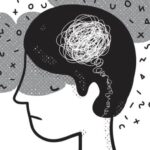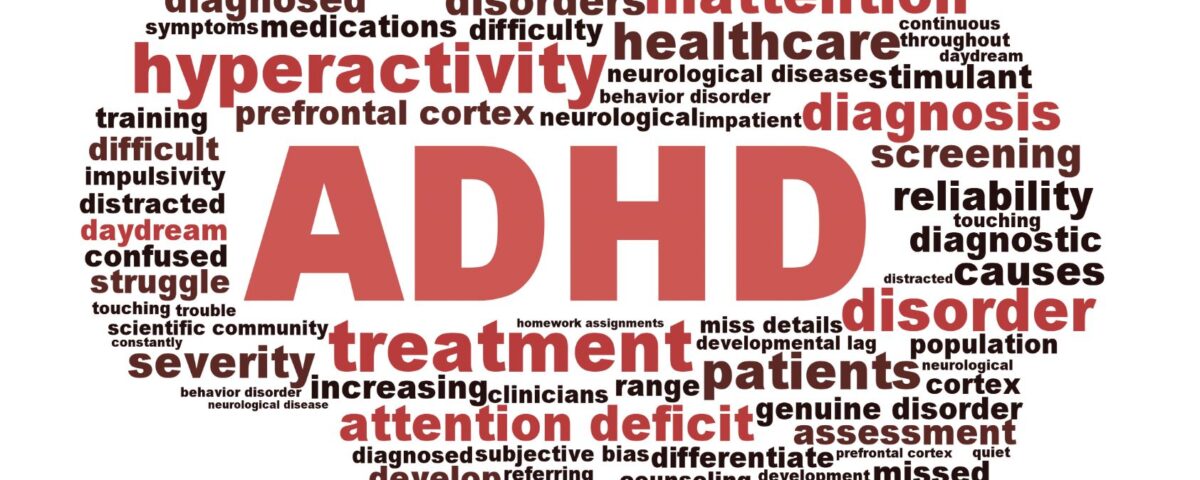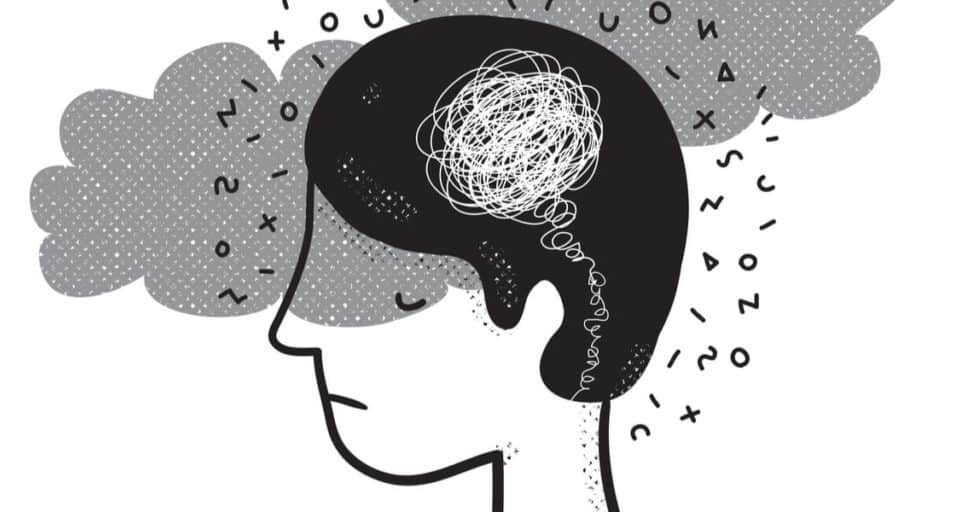
Understanding and Managing Health Anxiety
May 30, 2023
A look at Post Traumatic Stress (PTSD)
July 14, 2023Introduction to ADHD
Introduction: Attention deficit hyperactivity disorder (ADHD) is a complex neurodevelopmental condition that affects millions of individuals worldwide. It is characterized by persistent patterns of inattention, hyperactivity, and impulsivity, which can significantly impact daily functioning and quality of life. In this article, we will explore the pathopsychology of ADHD, the diagnostic process, and the available treatment options to help individuals better understand and manage this condition.
The Pathopsychology of ADHD: The exact causes of ADHD are not fully understood, but research suggests a combination of genetic, neurological, and environmental factors play a role. Several regions of the brain involved in executive functions, such as the prefrontal cortex, basal ganglia, and cerebellum, are implicated in ADHD. Neurotransmitters, including dopamine and norepinephrine, are also believed to contribute to the pathopsychology of the disorder.
Individuals with ADHD often struggle with sustained attention and have difficulty filtering out irrelevant stimuli. They may exhibit impulsive behaviors and have challenges with organization, time management, and self-regulation. These symptoms can vary in severity and may persist into adulthood, though they may manifest differently in different age groups.
Diagnosing ADHD
Diagnosing ADHD: The diagnosis of ADHD involves a comprehensive assessment that considers the presence and persistence of symptoms across different settings and contexts. It typically involves a thorough evaluation conducted by a qualified psychiatrist who specializes in ADHD.
To establish a diagnosis, the psychiatrist will gather information from various sources, including the individual's medical history, reports from parents, teachers, or other caregivers, and behavioral observations. Diagnostic criteria outlined in the Diagnostic and Statistical Manual of Mental Disorders (DSM-5) are used as a guideline to assess the presence of core symptoms and rule out other possible explanations for the symptoms.
The diagnostic process may also include assessments of cognitive functioning, academic performance, and emotional well-being to evaluate the impact of ADHD on various aspects of an individual's life. It is essential to involve multiple perspectives and consider the developmental context when making a diagnosis.
Treatment options for ADHD
Once diagnosed, individuals with ADHD have several treatment options available to manage their symptoms effectively. The two main categories of treatment are psychosocial interventions and psychotropic medications.
Psychosocial interventions encompass various evidence-based approaches, including behavioral therapy, cognitive-behavioral therapy (CBT), and educational interventions. These therapies aim to enhance self-control, develop coping strategies, improve organizational skills, and strengthen social skills. They also involve working closely with parents, teachers, and other support systems to create a structured and supportive environment for the individual.
Psychotropic medications, such as Methylphenidate (Ritalin) and Atomoxetine (Strattera), are commonly prescribed for individuals with ADHD. These medications target specific neurotransmitter systems in the brain to improve attention, impulse control, and hyperactivity. The choice of medication depends on various factors, including the individual's age, symptom profile, and medical history. It is crucial to work closely with a psychiatrist to find the most suitable medication and dosage.
Understanding Methylphenidate (Ritalin) and Atomoxetine (Strattera)
Methylphenidate, commonly known by its brand name Ritalin, is a stimulant medication that has been used for several decades to treat ADHD. It belongs to a class of medications known as stimulants and works by increasing the availability of certain neurotransmitters in the brain, including dopamine and norepinephrine. By enhancing the functioning of these neurotransmitters, Methylphenidate helps individuals with ADHD improve their attention, concentration, and impulse control.
Methylphenidate is available in various formulations, including immediate-release and extended-release versions. The immediate-release form typically lasts for a few hours, while the extended-release formulations can provide longer-lasting effects, allowing for once-daily dosing. However, the specific dosage and formulation will vary based on an individual's needs, as determined by their healthcare provider.
Like any medication, Methylphenidate can have potential side effects. Common side effects may include decreased appetite, trouble sleeping, increased heart rate, and elevated blood pressure. In some cases, individuals may experience irritability or mood swings. However, these side effects are usually mild and tend to improve over time or with dosage adjustments. It's important to discuss any concerns or side effects with a healthcare professional to ensure the best course of treatment.
Atomoxetine, marketed under the brand name Strattera, is a non-stimulant medication approved for the treatment of ADHD. Unlike Methylphenidate, Atomoxetine does not belong to the class of stimulants. Instead, it works by selectively inhibiting the reuptake of norepinephrine, thereby increasing its availability in the brain. By doing so, Atomoxetine helps regulate attention and impulsivity in individuals with ADHD.
Atomoxetine is typically prescribed as a once-daily medication and is available in various dosages based on an individual's age and weight. It may take several weeks to notice the full therapeutic effects, so patience is crucial during the initial treatment period.
While Atomoxetine is generally well-tolerated, it can also have potential side effects. Common side effects may include stomach upset, decreased appetite, drowsiness, and dizziness. In rare cases, it can lead to an increase in suicidal thoughts, so close monitoring is necessary, especially in individuals with a history of depression or anxiety. It is vital to work closely with a healthcare professional to determine the appropriate dosage and monitor any potential side effects.
Conclusion
ADHD is a multifaceted neurodevelopmental disorder that impacts individuals of all ages. While the exact causes of ADHD are not fully understood, research suggests a combination of genetic, neurological, and environmental factors contribute to its pathopsychology. Individuals with ADHD experience challenges related to attention, impulse control, and hyperactivity, which can significantly affect their daily lives.
The diagnostic process for ADHD involves a comprehensive evaluation conducted by a qualified psychiatrist specializing in ADHD. This assessment considers the presence and persistence of symptoms across different settings and contexts, utilizing the diagnostic criteria outlined in the DSM or ICD. By involving multiple sources of information and considering the individual's developmental context, an accurate diagnosis can be made, ruling out other possible explanations for the symptoms.
Once diagnosed, individuals with ADHD have a range of treatment options available to help manage their symptoms and improve their overall functioning. Psychosocial interventions, such as behavioral therapy, cognitive-behavioral therapy (CBT), and educational interventions, focus on developing coping strategies, enhancing self-control, improving organizational skills, and fostering social skills. These interventions often involve collaboration with parents, teachers, and other support systems to create a structured and supportive environment that optimizes the individual's success.
Psychotropic medications, including Methylphenidate (Ritalin) and Atomoxetine (Strattera), are commonly prescribed to address the symptoms of ADHD. Methylphenidate, a stimulant medication, increases the availability of certain neurotransmitters in the brain, while Atomoxetine, a non-stimulant, selectively inhibits the reuptake of norepinephrine. These medications can help improve attention, impulse control, and hyperactivity, allowing individuals to better manage their ADHD symptoms. Close collaboration with a psychiatrist is crucial to determine the appropriate medication, dosage, and monitoring of any potential side effects.
It is important to note that the treatment of ADHD is not one-size-fits-all, and a personalized approach is necessary to address each individual's unique needs. The combination of psychosocial interventions and psychotropic medications, tailored to the individual, can provide comprehensive support and help individuals with ADHD thrive in various aspects of their lives.
By understanding the pathopsychology of ADHD, seeking proper diagnosis and treatment, individuals with ADHD can gain a deeper awareness of their condition and develop strategies to manage their symptoms effectively. With the right support and interventions, individuals with ADHD can unlock their full potential and lead fulfilling and successful lives.

